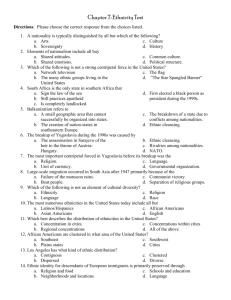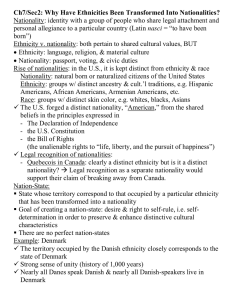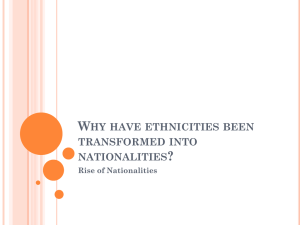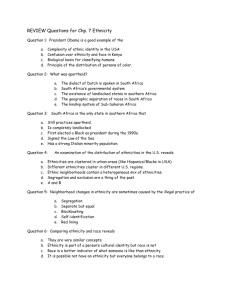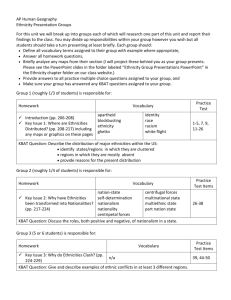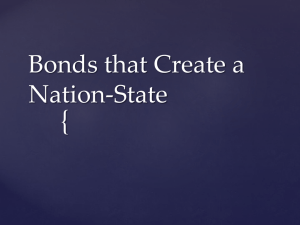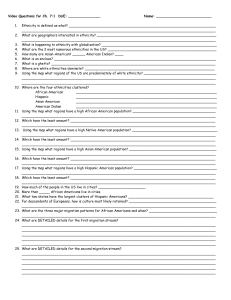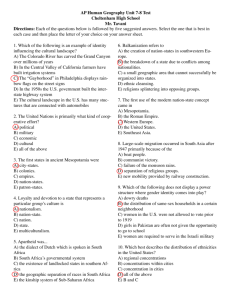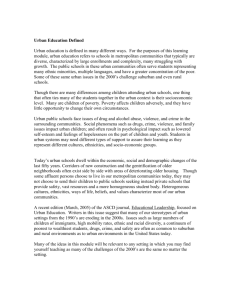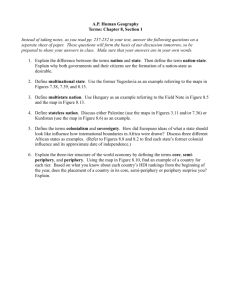Document
advertisement
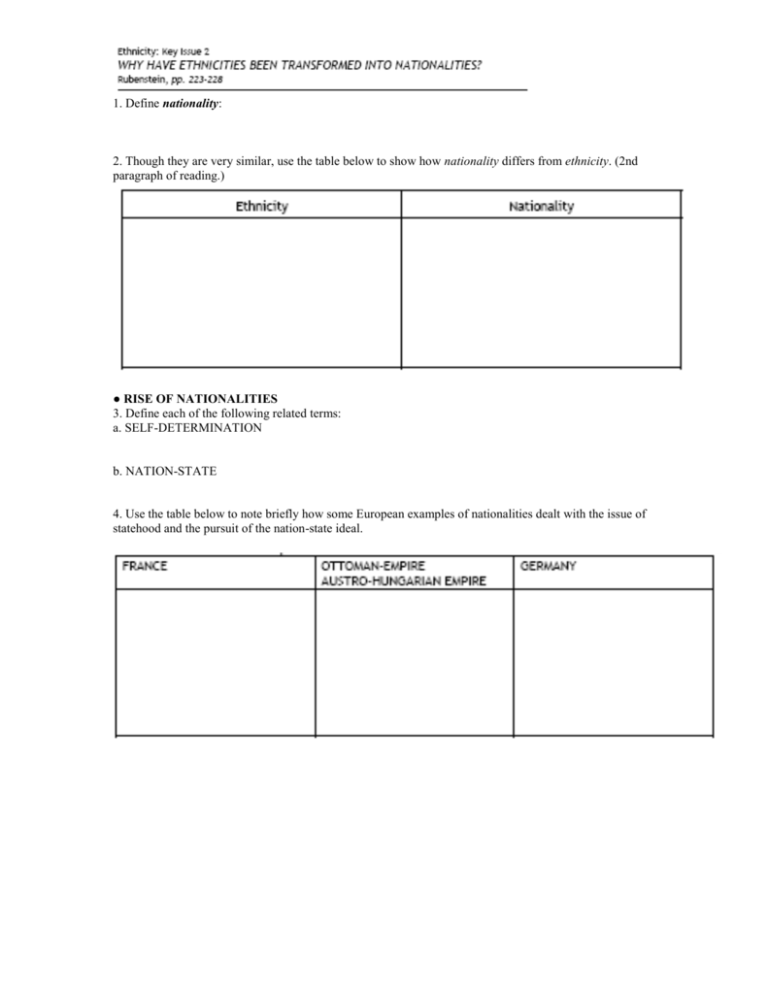
1. Define nationality: 2. Though they are very similar, use the table below to show how nationality differs from ethnicity. (2nd paragraph of reading.) ● RISE OF NATIONALITIES 3. Define each of the following related terms: a. SELF-DETERMINATION b. NATION-STATE 4. Use the table below to note briefly how some European examples of nationalities dealt with the issue of statehood and the pursuit of the nation-state ideal. 6. Why is Denmark a fairly good example of a nation-state? 7. Three regions of Denmark prevent the country from being a “perfect” nation-state. List and describe them in the table below. 8. Shade and label Denmark and her territories on this map of the North Atlantic region. Label several other countries in the region. 9. Regarding “NATIONALISM” (a) What is it? (b) How do nations and states foster it? (c) What are centripetal forces? ● MULTINATIONAL STATES 10. What is a multiethnic state? Give an example. 11. What is a multinational state? Describe how the United Kingdom is an example. 12. When the Soviet Union dissolved into 15 countries in the 1990s, the new countries were based on ethnicities. They can be divided into 4 groups based on their location. Complete the chart below to indicate the countries in each group. NOTE: Be sure to look at the map on p. 240 to familiarize yourself with the locations of these countries. 13. Note the major religion and language of each of the Baltic states. a) b) c) 14. The ethnic divisions among the Eastern European states are blurred for what reasons? 14b. Why has the Crimean Peninsula of Ukraine, been a bit of a problem? 14c. What did the majority of Moldovans want when they gained independence? Who opposed this? 15a. What religions and languages are most common in the Central Asian countries? 15b. Have there been ethnic problems in Central Asia and, if so, where? If not, why not? 16a. How many different nationalities (ethnicities) are found in the country of Russia? 16b. Why are independence movements flourishing among these groups? 16c. Russia has resisted the independence movement in Chechnya for what TWO reasons? i. ii. 17. In the Caucasus region, there have been many problems with the new nations and ethnicities. Summarize the main problem, and note specifics of regions and peoples, for each of the four main ethnicities. ● REVIVAL OF ETHNIC IDENTITY 18. How did communists suppress the issues of ethnicity and nationalism? (Give several examples.) 19. With the fall of communist governments in the 1990's, what kinds of problems have arisen in what places? (Give several examples.)
